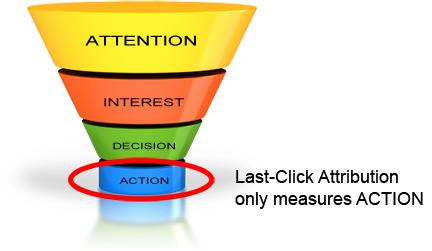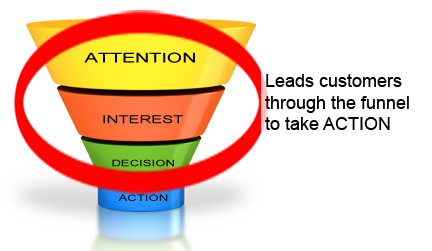
Let me take you back a few years, then we’ll jump ahead to the digital advertising world we live in now. Several years ago, I was talking to the owner of a small business one day about what drove customers to their store. She told me it was simple: the phone book. I took the time to explain it really isn’t that simple. The phone book was just the last stop on the customer’s journey to find her. Without all the brand building, reputation building, and advertising they’d done over the years, the customer would have never known to look for them in the phone book. If they didn’t already know the name, how would they know to look? And if you’re talking about the yellow page parts, wow, they are looking for your name but seeing all of your competitors – some of which will outspend you on ads.
Jump ahead to the Google era and it’s a similar situation. When asked how they found your business, people may say “I googled it.” But what they aren’t saying is that the googled your name because they already knew it. And, just like the yellow pages, if they googled your name, up came the names of your competitors, or directories of other businesses. Or if they happened to google something generic, like “plumbers in my town,” they may not have seen you at all.
So by the time they want to get in touch, if you haven’t already established yourself, it may be too late.
That’s the trap of “last attribution.”
In the digital world, it’s “last click attribution” that’s the issue.
Who gets credit for driving customers? The last thing they visited.
Why would they click on, call, or visit your business over the other 10 listings in Google? Because they already know you. Maybe they’ve seen your trucks, your building, know your reputation, or seen your advertising. In other words, building your brand is what made the conversion when they needed you. If you wait until they need you before getting your name in their head, you’re no more likely to get the call than the next guy. And you’d better hope the next guy isn’t outspending you on keywords.
A new study out by AdRoll emphasizes just this point when they say that Last Click Measurement doesn’t tell the whole story. Follow their logic trail:
- Only 16% of all internet users click on ads. Of those, half account for 85% of all clicks on display ads. Let that sink in for a minute. The ads you place on-line only get clicked on by a small number of people seeing them. That means basing your success on that last click means you aren’t tracking the vast majority of people seeing your content. Depending on this last-click attribution means you are only tracking a small portion of your marketing funnel.
- Last-click incentivizes users already likely to visit or purchase. That’s the so-called funnel jumpers. That’s great to move people quicker to commit, but it discounts people who are earlier in the funnel or in the awareness stage that you want as customers as well. Today’s browsers are tomorrow’s shoppers.
- Last-click gives all the credit to the final-click and discounts any marketing that happened beforehand. Any brand building or awareness campaigns, or online presence designed to educate, inform, and push people through the purchase funnel is ignored. And yet it’s the “beforehand” marketing that makes the “now” marketing work.
 We know this to be true from decades of studying consumer behavior. While the delivery mechanisms may be different, the behavior is still pretty much the same.
We know this to be true from decades of studying consumer behavior. While the delivery mechanisms may be different, the behavior is still pretty much the same.
Almost nobody buys anything the first time see it – and the more expensive something is, the longer it takes to move them to purchase.
 With the ease of on-line information, people
With the ease of on-line information, people
often see something that peaks their interest and researches it before moving to the next stage.
It’s why re-targeting of ads can be effective. And blended media campaigns have a compounding effect that makes each piece more valuable.
Maybe you’ve seen this before?
The 1st time people look at ad, they don’t see it.
The 2nd time, they don’t notice it.
The 3rd time, they are aware that it is there.
The 4th time, they have a fleeting sense that they’ve seen it before.
The 5th time, they actually read the ad.
The 6th time, they thumb their nose at it.
The 7th time, they get a little irritated with it.
The 8th time, they think, “Here’s that confounded ad again.”
The 9th time, they wonder if they’re missing out on something.
The 10th time, they ask their friends or neighbors if they’ve tried it.
The 11th time, they wonder how the company is paying for all these ads.
The 12th time, they start to think that it must be a good product.
The 13th time, they start to feel the product has value.
The 14th time, they start to feel like they’ve wanted a product like this for a long time.
The 15th time, they start to yearn for it because they can’t afford to buy it.
The 16th time, they accept the fact that they will buy it sometime in the future.
The 17th time, they make a commitment to buy the product.
The 18th time, they curse their poverty because they can’t buy this terrific product.
The 19th time, they count their money very carefully.
The 20th time prospects see the ad, they buy what it is offering.
Thomas Smith wrote that in 1885. Think how many ads there were then and how many you are exposed to now! If it took 20 times before consumers were moved to action in 1885, what about now? And yet, last-click attribution gives all the credit to the 20th time. That may tempt you to stop the first 19 and just run the 20th one, skipping the 19 steps that made step 20 work.
Here’s how the AdRoll study sums it up:
Blended attribution takes into account what advertisers have always known: that viewing ads influences consumer behavior. By combining views and clicks, we reveal a more nuanced, and ultimately more accurate, picture of how advertising affects users.
This helps marketers allocate their budget and take into account all the effort that goes into both media planning and creative development. Instead of overvaluing—or in the worst cases even rewarding—funnel jumpers who take all the credit for being the last touchpoint before a sale happens, advertisers can assign credit more accurately.
Here’s a link to AdRoll’s Blended Attribution Playbook if you want to read more.
